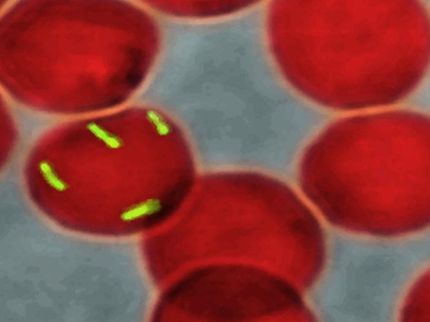Surprising infection inducing mechanism found in bacteria
A research appearing in Nature , with the participation of doctors Susana Campoy and Jordi Barbé from the Department of genetics and microbiology at UAB, demonstrates that bacteria have a surprising mechanism to transfer virulent genes causing infections. The research describes an unprecedented evolutionary adaptation and could contribute to finding new ways of treating and preventing bacterial infections.
Pathogenic genes are responsible for making bacteria capable of causing diseases. These genes cause bacteria to produce specific types of toxins and determine whether or not a disease will later develop in an individual. These virulent genes can be passed from one bacteria to another if the genome segments containing them, known as pathogenicity islands, are transferred from one to another.
A team of researchers from Universitat Autònoma de Barcelona, together with members of the CSIC Institute for Agrobiotechnology, Public University of Navarre, Virginia Commonwealth University, and New York University Medical Center, coordinated by the Valencian Institute for Agronomic Research (IVIA) and CEU-Cardenal Herrera University, have studied the mechanisms producing virulence in staphylococcus bacteria and causing the Toxic Shock Syndrome, a rare but potentially fatal illness in 50% of the cases.
Researchers observed how pathogenicity islands underwent an unprecedented evolutionary adaptation to be able to transfer pathogens to other innocuous bacteria and thus transform them into virulent bacteria.
Under normal conditions, pathogenicity islands produce the protein Stl, which binds to the DNA segment containing virulent genes and represses the transfer of the island. However, sometimes bacteria become infected with a virus which packages and transfers these virulent genes to other bacteria.
Scientists have discovered that these islands can detect the presences of a virus, eliminate the repression produced by Stl, and thus commence a replication and packaging cycle. The island is then capable of transference and of making other harmless bacteria turn virulent.
The new mechanism discovered by scientists is of great importance for the development of new treatments for diseases caused by bacterial toxins. The pathogenicity island studied is a prototype of a new family of virulent DNA recently discovered which also can be transferred to other species of bacteria such as Listeria monocytogenes, responsible for a large number of intoxications.
Less than a year ago, the research group led by Dr Jordi Barbé from the Department of Genetics and Microbiology at UAB published an article in Science on the antibiotic resistance mechanism in bacteria ["The SOS Response Controls Integron Recombination". Science . Vol. 324 (2009)]. "With the two articles in Nature and Science we have basic knowledge of the mechanisms used by bacteria to cause infections. This "doublet" in science not only demonstrates the quality of research being carried out at universities in our country, but also the possibility of creating applications for the treatment and prevention of bacterial infections", says Dr Jordi Barbé.
Topics
Organizations
Other news from the department science

Get the life science industry in your inbox
By submitting this form you agree that LUMITOS AG will send you the newsletter(s) selected above by email. Your data will not be passed on to third parties. Your data will be stored and processed in accordance with our data protection regulations. LUMITOS may contact you by email for the purpose of advertising or market and opinion surveys. You can revoke your consent at any time without giving reasons to LUMITOS AG, Ernst-Augustin-Str. 2, 12489 Berlin, Germany or by e-mail at revoke@lumitos.com with effect for the future. In addition, each email contains a link to unsubscribe from the corresponding newsletter.






















































